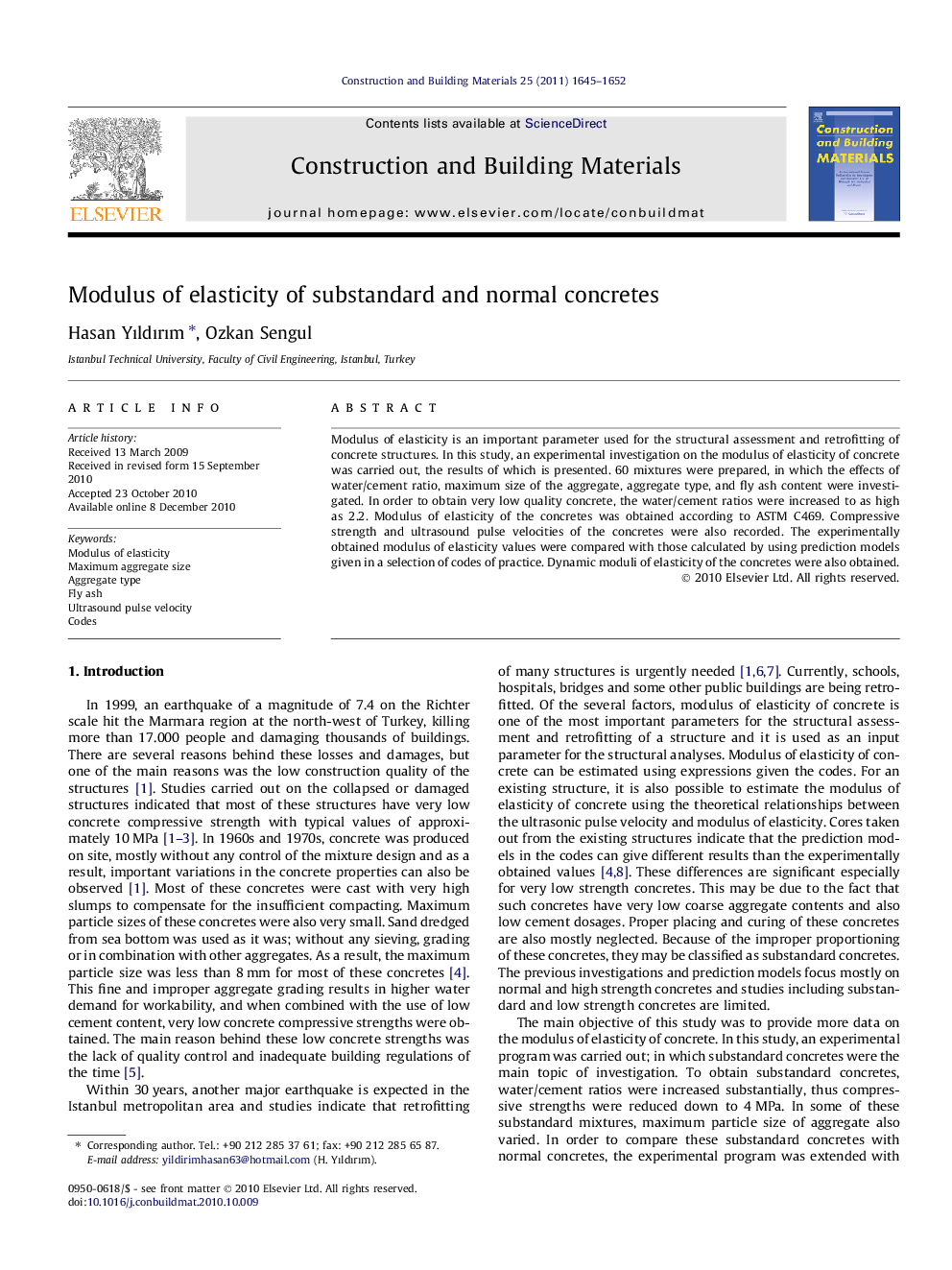| Article ID | Journal | Published Year | Pages | File Type |
|---|---|---|---|---|
| 259701 | Construction and Building Materials | 2011 | 8 Pages |
Modulus of elasticity is an important parameter used for the structural assessment and retrofitting of concrete structures. In this study, an experimental investigation on the modulus of elasticity of concrete was carried out, the results of which is presented. 60 mixtures were prepared, in which the effects of water/cement ratio, maximum size of the aggregate, aggregate type, and fly ash content were investigated. In order to obtain very low quality concrete, the water/cement ratios were increased to as high as 2.2. Modulus of elasticity of the concretes was obtained according to ASTM C469. Compressive strength and ultrasound pulse velocities of the concretes were also recorded. The experimentally obtained modulus of elasticity values were compared with those calculated by using prediction models given in a selection of codes of practice. Dynamic moduli of elasticity of the concretes were also obtained.
Research highlights► Modulus of elasticity of substandard concretes are substantially lower. ► The modulus of elasticity estimated by codes may be substantially different from actual values. ► Different expressions for various concretes give better results in estimation. ► Ultrasound pulse velocity can be used in estimating elastic modulus of substandard concretes. ► Aggregate type may substantially affect the modulus of elasticity of concrete.
